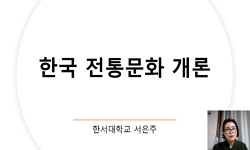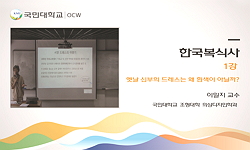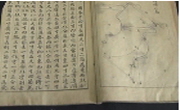본 연구의 목적은 한국 전통 복식에 있어서 감각적으로 지각되는 배색이미지를 과학적인 실측자료를 토대로 정량적인 연구를 통하여 그 특성을 연구하고자 한 것이다. 연구의 범위는 조선...
http://chineseinput.net/에서 pinyin(병음)방식으로 중국어를 변환할 수 있습니다.
변환된 중국어를 복사하여 사용하시면 됩니다.
- 中文 을 입력하시려면 zhongwen을 입력하시고 space를누르시면됩니다.
- 北京 을 입력하시려면 beijing을 입력하시고 space를 누르시면 됩니다.
https://www.riss.kr/link?id=T8557514
- 저자
-
발행사항
서울 : 建國大學校, 2002
- 학위논문사항
-
발행연도
2002
-
작성언어
한국어
- 주제어
-
KDC
592.011 판사항(4)
-
DDC
746.92 판사항(21)
-
발행국(도시)
서울
-
형태사항
vii, 102 p. : 삽도 ; 26 cm
-
일반주기명
참고문헌 : p.76-89
- 소장기관
-
0
상세조회 -
0
다운로드
부가정보
국문 초록 (Abstract)
본 연구의 목적은 한국 전통 복식에 있어서 감각적으로 지각되는 배색이미지를 과학적인 실측자료를 토대로 정량적인 연구를 통하여 그 특성을 연구하고자 한 것이다.
연구의 범위는 조선시대 후기의 복식이며, 한국 전통 복식 배색 이미지의 특성을 파악하기 위해 조사 연구하였다.
배색 이미지 측정을 위한 자극물은 배색방법과 배색대비효과에 따라 8개로 선정하였고, 의미미분척도는 20개의 형용사쌍으로 구성되었다.
자료의 수집은 주로 20~40대의 남녀 총 423명을 대상으로 하였으며, 자료의 분석에는 요인분석, 군집분석, ANOVA, GLM, 다차원척도, 다중회귀분석이 사용되었다.
본 연구의 결과는 다음과 같다.
첫째, 한국전통복식 배색이미지의 구성요인은 젊음성, 매력성, 현시성, 감각성의 4개 요인으로 나타났다.
둘째, 한국전통복식 배색이미지의 의미구조는 자연스러운 젊은 이미지와 선명하고 강한 이미지로 나타났다.
셋째, 배색방법에 따른 이미지를 살펴보면, 모든 요인에서 유의적인 차이가 나타났으며 특히 젊음성 요인에서 현저한 차이가 나타났다. 배색대비효과에 따른 이미지는 모든 요인에서 유의적인 차이가 나타났으며 전체적으로 감각성 요인을 제외하고는 두드러진 차이를 보여주었다. 배색방법별 배색대비효과에 따른 이미지는 모든 요인에서 유의적인 차이가 나타났다.
넷째, 인구통계적 특성에 따른 배색이미지는 성별, 연령, 전공여부에 따라 유의한 차이가 있었다. 특히 성별에서는 현시성 요인에 대해서 남성과 여성의 차이가 크게 나타났다. 연령에 따른 이미지의 차이에서는 연령이 높아질수록 젊음성 요인과 매력성 요인에 좀 더 높은 점수를 주었고 전공여부에 따른 평가에서 전공인은 일반인보다 현시성 요인에 높은 점수를 주고 일반인은 전공인에 비해 감각성 요인에 높은 점수를 주고 있는 것으로 평가되었다.
다섯째, 배색이미지의 공간에 따른 이미지축은 포지셔닝된 특성에 따라 화사한-소박한, 부드러운-딱딱한으로 명명하였으며, 분류된 위치에 따라 5그룹으로 분류할 수 있었다.
여섯째, 배색에 대한 선호도에는 세련된, 자연스러운, 부드러운, 젊은, 신선한, 편안한, 밝은, 산뜻한, 즐거운, 달콤한, 깨끗한, 무거운, 고상한, 차분한, 동적인 이미지가 관련이 있는 것으로 나타났다. 성별에 따른 차이에서 남성은 깨끗하고 차분한 이미지를, 여성은 편안하고 신선하고 즐겁고 화사한 분위기의 이미지를 선호하였다. 연령에 따른 차이에서 20대 이하인 경우에는 고상하고 화사한 따뜻한 이미지를, 30대는 깨끗하고 무게감있는 이미지를, 40대 이상에서는 은은하면서 동적인 이미지를 선호하였다.
일곱째, 한국 전통복식의 배색이미지는 젊고 매력적인 이미지로 나타나 상징 속에서의 전통색채에 대한 기존 관념보다 상당히 세련되고 매력적인 색채이미지로 받아들여지고 있었다. 전통복식의 배색이미지에 대해 남성보다는 여성이 좀더 매력적이고 현시적인 것으로 평가하였다. 색채감정에 대해 남성보다는 여성이 보다 긍정적인 감각을 가지고 있었고, 연령이 높을수록 전통배색에 대해 호의적으로 평가하는 경향을 나타내었다. 배색에서의 상생·상극의 관계에서도 그 상징적인 의미와 달리 각기 색상과 톤 사이의 관계에 따라 긍정적이거나 부정적인 이미지로 달리 인식되는 것으로 나타났다.
이상에서 살펴봤을 때 한국전통복식의 배색이미지는 인구통계적 특성에 따라 다르게 인식되고 또 선호되고 있었으므로, 이러한 자료를 토대로 한국전통 이미지를 기초로 전개되는 시장의 세분화된 타겟에 따라 디자인작업과 마케팅 분야에 활용할 수 있을 것이며, 이러한 연구 방법을 기초로 하여 한국의 전통적 배색이미지를 이해하는 것은 외국의 전통 배색이미지와의 비교 연구를 가능하게 하여 색채계획부분에서 국내 상품개발은 물론 한국전통 이미지를 가진 수출상품을 개발하는데 도움이 될 수 있을 것이다.
다국어 초록 (Multilingual Abstract)
The purpose of this study was for the character by the coloration image in Korean costumes which is based on scientific measurement data. This survey was investigated until the late of chosun dinasty to figure out the character by the coloration imag...
The purpose of this study was for the character by the coloration image in Korean costumes which is based on scientific measurement data.
This survey was investigated until the late of chosun dinasty to figure out the character by the coloration image in Korean costumes.
The stimulus were 8 colorations in korean costumes and the semantic differential scale was constructed bi-polar 20 pairs.
The subjects were studied by 423 peoples their ages in 20~40 and analyzed by factor analysis, cluster analysis, anova, glm, multidimensional scaling method, regression.
The result were as follows;
1. The constructing factors of image of coloration were found out as youngness, attractiveness, visibility, and sensibility. (total variance: 66.389%)
2. The hierarchical structure was combined a natural and young, vividness and strong image.
3. The image by method of coloration was significantly difference regarding all factors, above all, there are most significantly difference at the young factors.
The image by the effect of coloration were significantly difference regarding all factors, except the sensible factor.
The image by method of the effect of coloration were significantly difference regarding all factors.
4. The coloration image by the character of vital statistics were significantly difference according to ages, sex, and major. Especially there are differences between men and woman at the visible factor.
The older people give more points at the young, and attractive factors. The expert give more points at the visible factor than other people and on the other hand others give more points at the sensible factor.
5. The axis of coordinate by the space of the coloration image were named into gorgeous-plain and soft-hard, and it can be divided into 5 groups by the situation of being divided.
6. The preference by coloration image were associated with polished, natural, soft, young, fresh, calm, bright, light, happy, sweet, clean, heavy, noble, neat, and active image.
The men prefer to the clean and neat image and the woman prefer to the calm, fresh, happy, and gorgeous image.
In case of under twenties, people like noble, gorgeous, and warm image, in thirties, people like clean and heavy image, over forties, people like dim and active image.
The expert prefer to the polished, natural, young, soft, calm, bright, light, clean, and noble images.
7. The coloration image in Korea costumes were accepted positively in young and attractive image. And woman better than men were estimated korean costumes into attractive and visible things and positively accepted in the feeling of coloration.
The older people tend to accept traditional coloration more positively.
The relation of the five primary substance at the coloration were accepted differently, positively or negatively, according to the relation between color and tone unlike its original image.
목차 (Table of Contents)
- 목차
- 국문초록
- I. 서론 = 1
- 1. 연구의 필요성 = 1
- 2. 연구의 목적 = 3
- 목차
- 국문초록
- I. 서론 = 1
- 1. 연구의 필요성 = 1
- 2. 연구의 목적 = 3
- 3. 연구의 범위 및 방법 = 4
- II. 이론적 고찰 = 5
- 1. 복식과 색채이미지 = 5
- 2. 한국의 전통 색채관 및 체계 = 13
- 3. 한국전통복식의 배색구조 = 19
- 4. 한국전통복식에 사용된 색채와 배색의 상징성 = 20
- III. 연구방법 및 절차 = 26
- 1. 연구문제 = 26
- 2. 용어의 정의 = 27
- 3. 측정도구 = 28
- 4. 자료수집 및 분석 = 37
- IV. 연구결과 및 논의 = 40
- 1. 한국전통복식에 사용된 배색이미지의 의미구조 = 40
- 2. 한국전통복식 배색변화에 따른 이미지의 차이 = 44
- 3. 한국전통복식 배색이미지의 포지셔닝 = 65
- 4. 한국전통복식의 배색에 대한 선호도 = 68
- 5. 한국전통복식에 사용된 색채의 상징성과 실제 지각된 배색이미지 = 76
- V. 결론 및 제언 = 80
- 참고문헌
- 부록
- ABSTRACT












